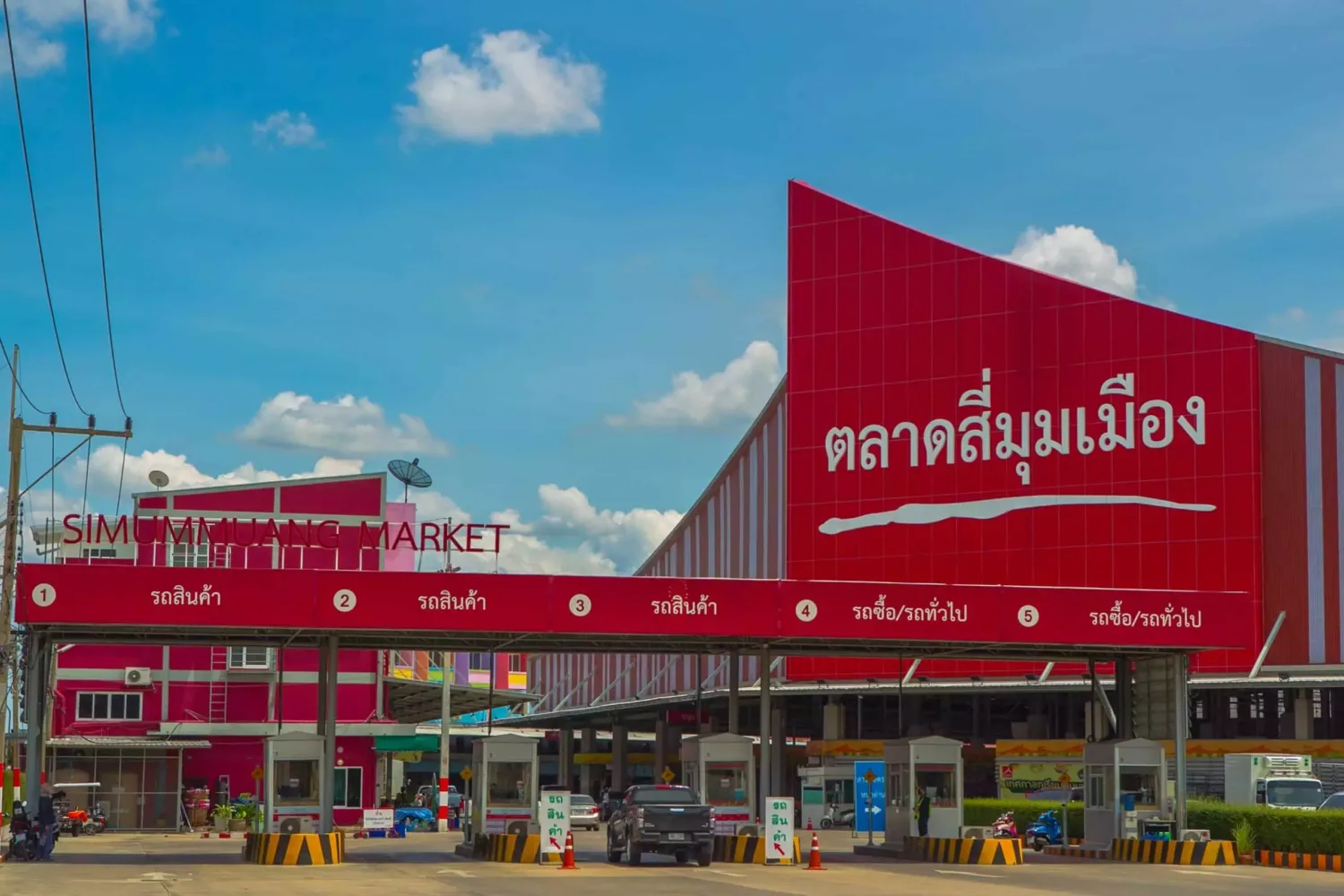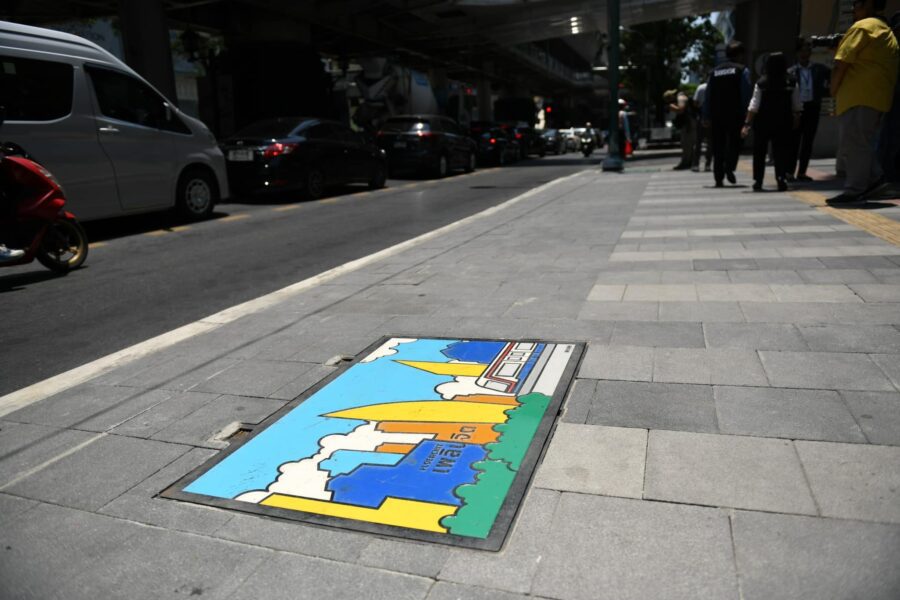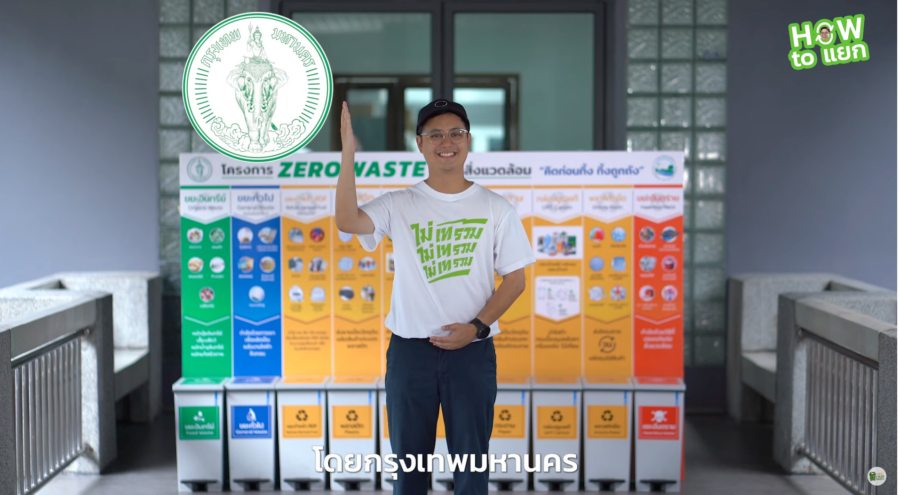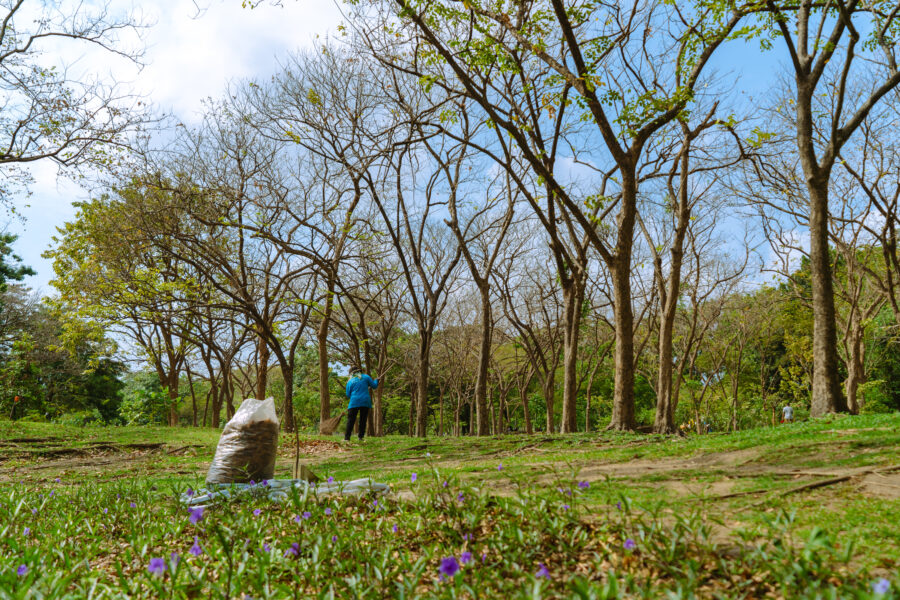By Natthanon Nakkhong
In addition to markets being a place for many people to shop, there is also something even greater: the enormous amount of waste generated, including packaging, various types of waste materials, and the most problematic being the various types of vegetable and fruit scraps that occur in large agricultural product delivery markets. Even though they can be decomposed or are excellent raw materials for producing fertilizers, because there is a possibility of contamination with other types of waste, in the end the vegetable and fruit scraps inevitably end up being buried anyway.
But if the market has good waste management, these vegetable and fruit scraps can create countless benefits. Which is good news because today there is a market that can create enormous value for vegetable and fruit scraps with its own waste management system that has great results. Let's study it.
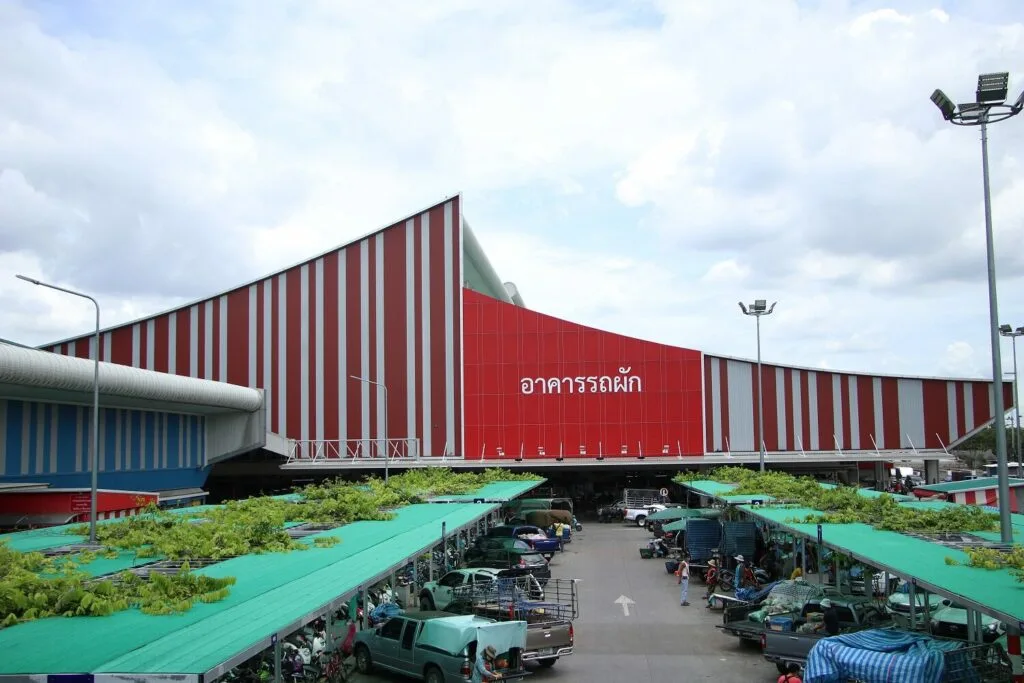
The headaches of large wholesale markets
“Si Mum Muang” is the largest and largest wholesale market for fruits and vegetables in the country. It is located on the outskirts of Bangkok on an area of over 350 rai. There are 50,000 people walking around the market every day and there is a daily turnover of 8,000 tons of products. As a result, there is a serious problem of disposing of more than 230 tons of fruit and vegetable waste per day, resulting in a high cost of landfilling of 35 million baht per year or 3-4 million baht per month.
But then one day, the entrepreneurs of the Si Mum Muang Market saw the value of caring for the environment, so they looked for a way to systematically manage waste, along with using various strategies to manage waste.
Manage waste systematically
Waste separation, reuse, and product development are three processes that Talad Si Mum Muang has integrated into the waste management within the market.
“Separate waste”
The Si Mum Muang Market has clearly divided zones for vegetables and fruits, such as the pineapple zone, the pomelo zone, the flower zone, etc., which is one of the advantages of the market. As a result, each zone contains only that type of waste. Placing bins in different zones makes it easy to separate waste from the beginning.
Once the waste is separated, someone must transport it, and the market has come up with a clever solution. Easy to do, low cost Without having to hire more people, but using the existing people, that is, the workers transporting vegetables and fruits and the market's porters, to their advantage by creating incentives for workers to push the garbage to the waste separation point, where each person will receive their own barcode. When they come to deliver the garbage, the system will collect points continuously. When the time comes, it will be converted into money to pay the workers, which is considered to benefit both the market and the workers.
“Reuse”
Sorted waste is converted into income for the market, for example, vegetable leaves can be sold to entrepreneurs such as fish ponds and cattle farms, approximately 50 tons per day, generating income of 11 million baht per year. As for recyclable waste (glass bottles, plastic bottles, and foam crates), approximately 12 tons per day, are recycled using a self-made machine, with a cost of only 3,000 baht, but can generate additional income of 1.5 million baht per year.
“Develop it to create products.”
Not only can it generate income, some of the sorted waste can also be developed into something useful, such as organic waste from leftover pineapples, oranges, watermelons, and lemons, which can be developed into an EM fermented water formula to be used for cleaning the market, reducing costs by 1.5 million baht per year. Corn husks and pineapple husks can be processed into food for beef and dairy cattle, producing more than 18 tons per day.
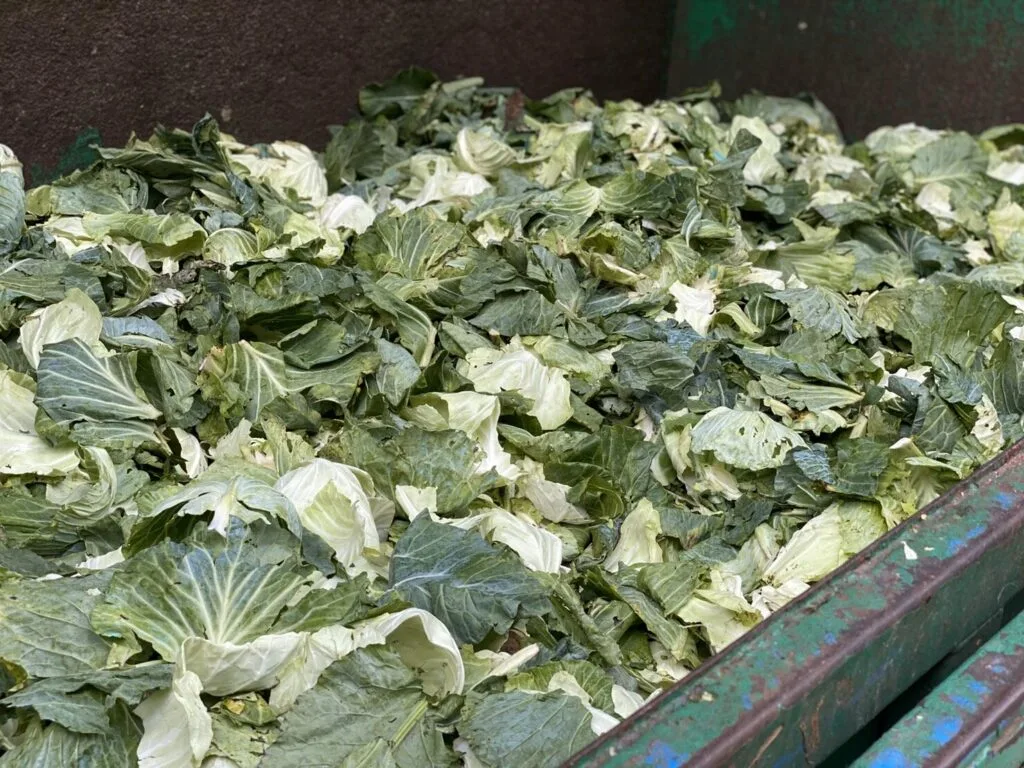
Getting people to be willing to separate their waste requires good communication.
The most difficult thing about waste management in Si Mum Muang Market is how to attract the attention of most people. This is a challenge that the operators of Si Mum Muang Market understand very well. Therefore, they have used a very creative method by using “concerts” that everyone is willing to listen to to help communicate. During the concerts, they spend time gradually giving information about waste management. When there are more concerts, people in the market receive more information. In addition, having a clear system, such as having a barcode for garbage collectors and a clear point for throwing garbage, helps people in the market know what they need to do.
Success cannot be achieved without cooperation.
From its inception until now, Talad Si Mum Muang has spent more than 8 years trying out and making mistakes in waste management. The vendors and workers are the key people who have made the market successful by changing their behaviors, which is the heart of the matter. Ease of waste separation
Although in the beginning it may have been necessary to use a hard line, with staff standing guard, but when the results were clear, the vendors continued to do so. Another important part is the 4,000-5,000 workers who collect garbage such as bottles and plastic, which is around 20 %. The market has supported by making bags connected to shopping carts to make it convenient to work, as well as creating good incentives for both buying and giving rewards. It is not surprising that these collaborations have created success for garbage management in the Si Mum Muang Market.
“From 230 tons of waste per day, the Si Mum Muang Market was able to reduce waste by more than 40%, reducing landfill costs by 4 million per year, and also increasing the market’s income by more than 20 million per year.”
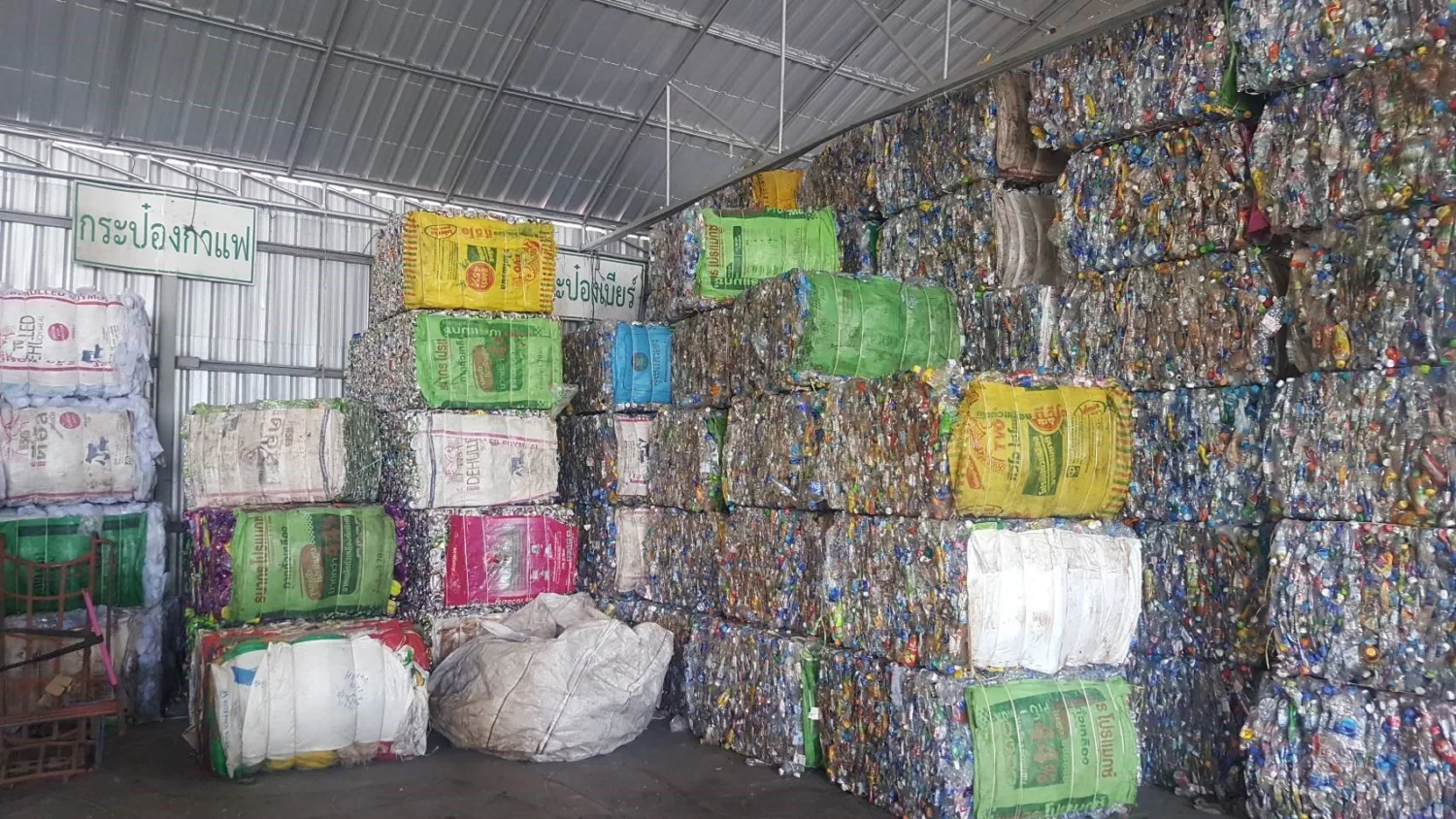
Lessons on waste management at Si Mum Muang Market
- No matter how much garbage there is, if there is good communication along with cooperation from everyone in the market, managing garbage in the market is no longer difficult.
- From useless waste, it will be transformed into something valuable through proper management and proper development.
Reference list
- Matichon Public Company Limited (2022). Si Mum Muang turns organic waste in the market into animal feed to help farmers. Reduce costs. Retrieved from https://www.sentangsedtee.com/farming-trendy/article_207747
- Manager Online. (2020). Talad Si Mum Muang creates sustainable business “with 5 waste management systems” to separate and add value. Retrieved from https://mgronline.com/greeninnovation/detail/9630000116040
- Masiree Silakham. (2024). Reduce costs by 4 million/year with sustainable waste management.. Retrieved from https://spacebar.th/business/economy-simummueang-market-reduces-business-costs- with-sustainable-waste-management
- Advanced Knowhow Co., Ltd. (n.d.). Turning waste into opportunities! A look at the concept of “Simum Muang Market” DIY waste management prototype. สืบค้นจาก https://www.advancebio11.com/blog/ส่อง แนวคิด%20“ตลาดสี่มุมเมือง”%20ต้นแบบจัดการขยะแบบทำเอง






